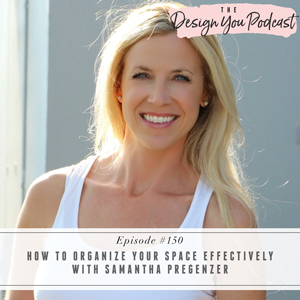
Around this time of year, a lot of people are thinking about decluttering because it’s prime time to spring clean and get our homes organized. But just because it’s a new year, it doesn’t mean it all has to be done right away. Today’s guest joins me to share the benefits of starting small and some tips and tools to help you get things in order.
Samantha Pregenzer is a professional organizer specializing in individualized solutions and systems for stressed-out moms and homeowners. She helps families declutter and organize their spaces and joins me today to share how she does this and show you how to organize your own life.
Join us this week and learn how to create some order in your home – without getting rid of anything! We discuss the challenges faced when starting a business and show you how to make life easier and feel good about your space.
If you want help creating a business with thriving revenue streams so that you can design the life you really want this year, now is your chance! We’re going to be opening the doors to the Design You Coaching Program really soon, get on our waitlist now!





